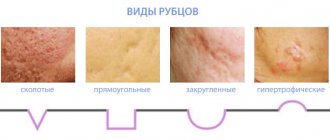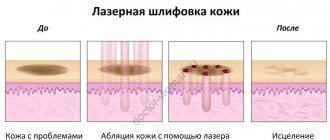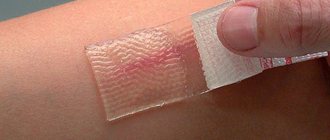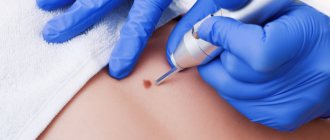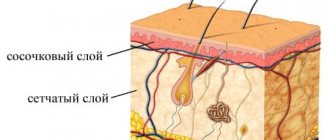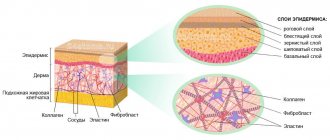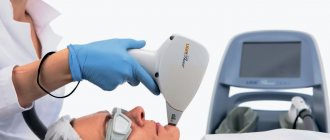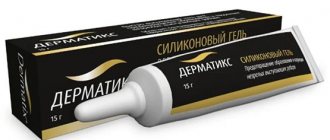An effective and even indispensable means of solving this problem is peeling of scars after acne treatment. At all times, even and smooth skin was considered one of the standards of beauty. But for many people, especially fair-haired and fair-skinned people, unpleasant formations in the form of acne (pimples and acne) can be so strong that even after getting rid of them, the skin cannot return to its normal state. The pockmarks, pits, and scars from treated acne give it a rough, bumpy, or pockmarked appearance in places.
Naturally, there are several (four in total) types of scars on the skin that appear due to other reasons - from skin damage from injuries and burns. But with cosmetic treatment methods, only two types of scars can be qualitatively smoothed and removed - normotrophic and hypotrophic. In more complex cases, it is already necessary to involve plastic surgery.
Since scars and skin irregularities, which are the insidious consequences of pimples and acne, are normotrophic manifestations, they can be effectively combated with the help of physical or chemical peeling.
The effectiveness of peelings for scars
How does acne scar peeling work? It evenly destroys the upper layer of the epidermis, along with dense scar tissue, and triggers the restructuring of internal processes in the dermis. Because of this, collagen, hyaluronic and elastin fibers begin to be actively produced in the lower layers of the skin, which form new skin without old annoying flaws.
Simply put, the top layer of the epidermis is carefully cleaned off - along with scars, stretch marks and nodules, age spots, areas of increased greasiness - and smoothed out. Of course, peeling does not immediately remove acne scars and other blemishes. First, the scars peel off along with the crusts of the upper layer of skin. At this time, you should not touch them, much less remove them yourself. And only after 10 days, new, already smooth, skin will form on the problem area.
Laser exfoliation of scars
During the procedure, a laser beam is applied to the scar area, which burns the top layer of skin. This is a surface grinding method that is performed to a depth of up to 0.001 mm.
Laser peeling is a non-contact way to remove scars, since only laser beams touch the skin, so the risk of infection during the session is minimal.
During laser scar correction, 2 types of apparatus are used:
- Carbon dioxide laser. This is a fairly traumatic procedure that requires a long recovery. Under the influence of the laser, the scar area is burned and the skin becomes very red. It helps remove minor defects and significantly reduce deep scars,
- Erbium laser is a more modern and gentle method of removing scar tissue. It acts precisely, burning only defective areas of the skin. This procedure is suitable even for those with thin, sensitive skin.
Laser peeling can be combined with other procedures, such as photorejuvenation or fractional resurfacing. The first combination will help reduce the severity of the scar and get rid of fine wrinkles, while the second can cope with deep skin defects.
Which peeling is better to use?
Peels of skin scars can be physical (mechanical), laser (hardware, radiation) or chemical (acid).
- Physical is a superficial peeling based on grinding the top layer of skin with various abrasive compounds such as scrubs. Fine abrasive chips made from materials of both natural and synthetic origin gently polish the top layer of skin and smooth it out. Many people periodically use scrubs on their face when washing their face. Scar peeling is similar to this procedure, but is performed more professionally.
- Laser, hardware peeling for scars and scars includes grinding of the epidermis by irradiation with lasers with a certain wavelength. The doctor adjusts this length, depending on the depth of penetration of scar tissue into the skin and the degree of its oldness. Laser irradiation removes scars gradually, layer by layer. Recent scars and scars from several laser treatments are completely resolved, while old ones remain, but become smoothed and visually invisible.
- From the point of view of the final result, chemical peeling of scars is the most effective type of such correction procedures. It has a deeper effect, capable of affecting not only the middle, but also the deep layers of the skin. In total, modern cosmetology uses more than fifty types of acid compounds for this method of cleansing and smoothing the skin. Popular and well-proven ones are: a composition based on 35...50% trichloroacetic acid TSA; retinoic; glycolic; phenolic compounds. The mechanism of their action is the same: softening of scar tissue, thinning, followed by exfoliation over several procedures.
What do these methods have in common, and which peel is best for eliminating acne scars? All methods are aimed at destroying scar tissue and smoothing the skin. All stimulate the active production of collagen, hyaluronic and elastin fibers, which restore the skin. All have a certain degree of stress on the skin and the body as a whole, and therefore require careful treatment and a rehabilitation period after use.
Are there any contraindications and side effects?
Achieving a visually noticeable cosmetic effect requires a procedure in two/three stages. Moreover, the interval between these stages should be from 1 to 3 months (depending on how the skin regeneration proceeds). It is dangerous to use peelings for sensitive and thin skin. Under the influence of acids, her condition can be made even worse. First you need to carefully and accurately do a small test. Checking for allergic reactions before performing a scar removal procedure is also desirable, and even mandatory. All this needs to be clarified before exposing the skin to highly concentrated formulations.
All peels, from the most gentle to the most radical, have a number of contraindications.
Peels for scars: contraindications
Any peeling is a protracted procedure, quite complex, painful and stressful for the body. You should not decide on it when the skin clearly has a tendency to form keloid scars. There is also a certain list of contraindications related to the general condition of the body.
This
- pregnancy and breastfeeding months;
- the presence of benign or malignant tumors;
- heart and vascular diseases, as well as hypertension;
- liver and kidney diseases;
- endocrine disorders and diabetes;
- manifestations of rosacea and rosacea;
- mental illnesses and disorders;
- allergic manifestations to the components of peeling compositions.
Recommendations from cosmetologists
Of course, in terms of the strength of its effect, chemical acid peeling is the most effective way to combat the effects of pimples and acne. However, since this procedure is very painful, causing significant traumatic effects on the skin, doctors recommend using it only when physical or laser (hardware) peelings cannot achieve satisfactory results.
In this case, the scars are removed along with the surface layer of the skin: after all, it is all subject to a chemical burn, the degree of which is controlled by a cosmetologist. The degree of acid concentration in the drug for chemical peeling is also determined by the doctor, based on the depth of the layer of skin affected by the scar that needs to be removed. After two to three minutes of exposure, the acidic composition is completely removed with a special medicine.
Recently, glycolic peeling has become the most popular method of chemical (acid) removal of atrophic scars. This is a really good modern method of peeling for scars, due to the softness of its effect on the skin. Although, of course, the word “softness” is not very suitable to describe a controlled acid burn of the epidermis.
The rehabilitation period after any chemical peeling procedure will take at least two/four weeks. In this case, areas of skin treated with an acid composition most often become crusty. Under it, new healthy epidermal cells are synthesized. And the crust, along with the scars, is rejected by the body - it peels off in the last week of the rehabilitation period. The main thing is not to rush and not to “clean off” it yourself!
It will not be difficult to choose which peeling to choose to solve your problem after consulting with your doctor (or even better, with several doctors). Physical or laser (hardware) peeling does not require serious preparation and a long period of rehabilitation. However, they will only be effective for removing shallow, not very pronounced, not old scars. If the scars are deep, noticeable and of ancient origin, you need a more radical remedy - chemical peeling.
However, cosmetologists recommend in all cases starting with more gentle treatment methods. After all, any peeling, in addition to getting rid of scars, also has other beneficial qualities for the epidermis. This is skin renewal, equalization of its tone, removal of a network of fine wrinkles and age spots, improvement of skin quality and strengthening of its protective properties.
Possible complications
As mentioned, there is always a risk of complications after the procedure, one of the most serious and difficult to correct are hypertrophic or keloid scars. They may appear if the patient violated the rules of care during the rehabilitation period or the specialist performed the procedure incorrectly.
This is possible if a person whose skin is prone to the growth of fibrous connective tissue has undergone deep combined peeling and other cosmetic procedures.
Scars may appear after an incorrect cleaning procedure.
This possibility exists if a person, during the recovery period, forcibly tore off crusts or flaps of skin that had exfoliated. To eliminate the problem, you need to consult a doctor and undergo serious treatment using injections with glucocorticosteroids and occlusive dressings.
If the above methods are ineffective, then laser therapy is performed or surgery is prescribed.
To avoid such complications, you need to find a qualified specialist and follow his recommendations regarding post-peeling care. After deep cleaning, it is recommended to use antimicrobial and anti-inflammatory agents, as well as carry out procedures that accelerate metabolic processes and healing of damaged tissues.
Results
If you intend to do facial peeling, then you need to understand that the “removal” of scars should still be done by an experienced cosmetologist. There is too high a chance that you will only worsen the condition of your skin if you do this serious procedure yourself, at home. Moreover: the choice of a specialist, as well as the correction method, also needs to be approached responsibly: do not leave your appearance in the hands of the “first” doctor you come across, but attend at least three consultations in different places, collect information from different, independent of each other, specialists. So that scar peeling really becomes a means of magical transformation, and does not create new long-term aesthetic problems.
Exfoliating mask with bodyaga and hydrogen peroxide
It is not possible to remove large old scars on your own. However, at home it is possible to make small, fresh scars almost invisible. For this purpose, you can use various folk remedies, but one of the most popular is an exfoliating mask with bodyaga and hydrogen peroxide.
This product has the following properties:
- Removes a layer of dead skin cells,
- Moderately irritates cells, stimulates their immunity, accelerates regeneration processes,
- Activates elastin production
- Stops or weakens the inflammatory reaction in the treated area,
- Dissolves scar tissue
- Destroys pathogenic microorganisms.
To make a mask, mix 1 tbsp. l. badyagi powder and hydrogen peroxide (3%), leave until foam appears. Apply the composition with a thin ball onto a cleaned area of skin with a scar, preferably before bed. In the morning, wash off the mask and then treat your skin with a cosmetic product with a UV filter.
